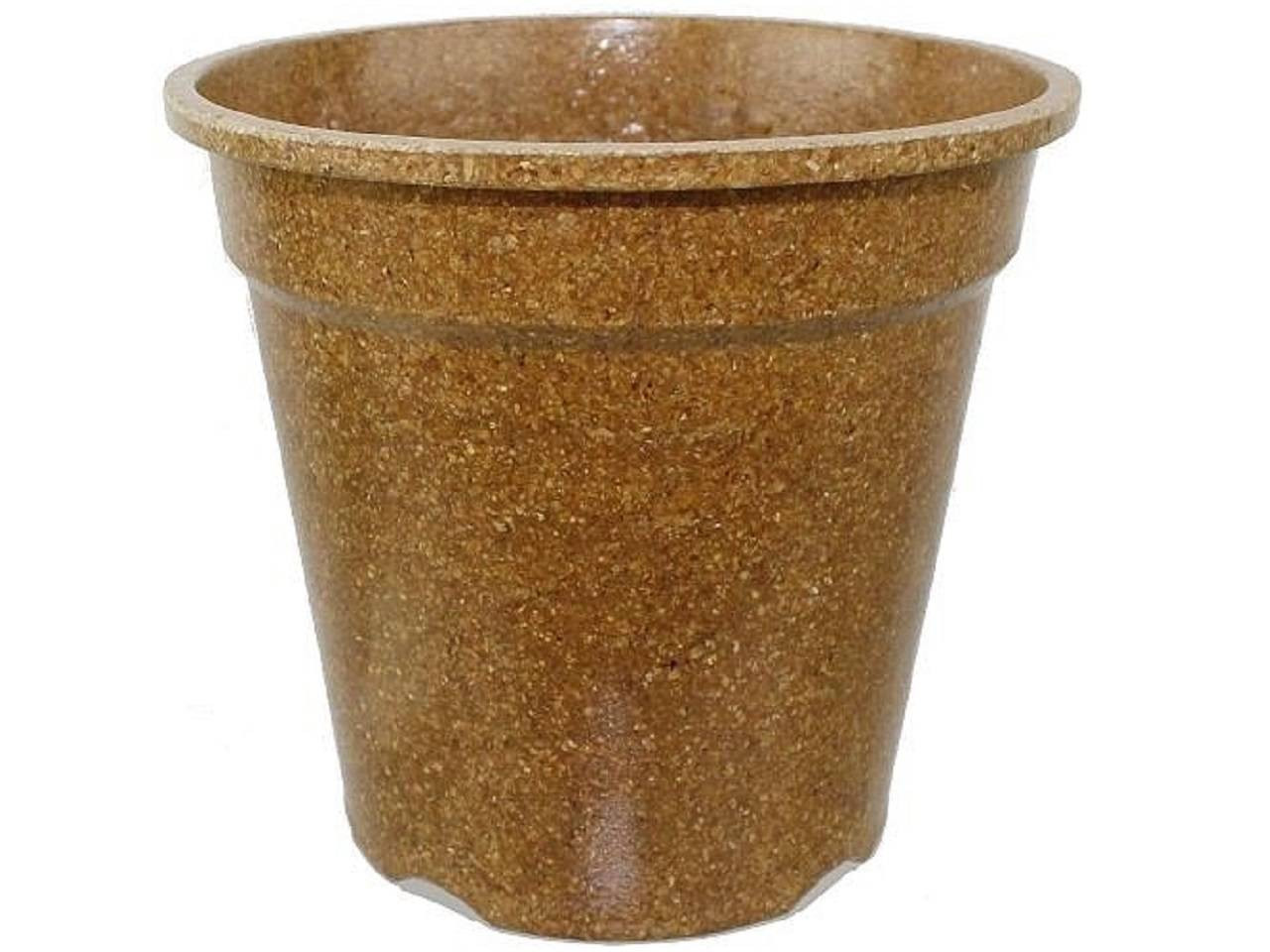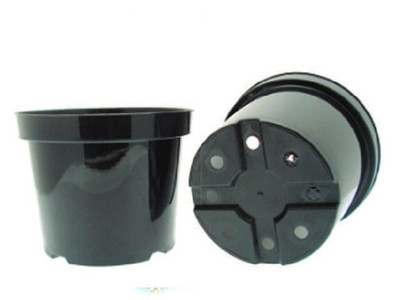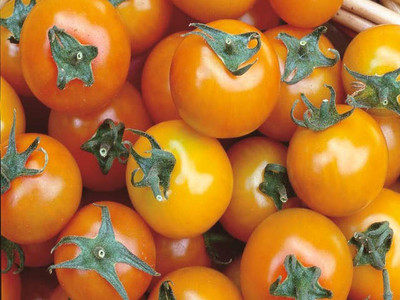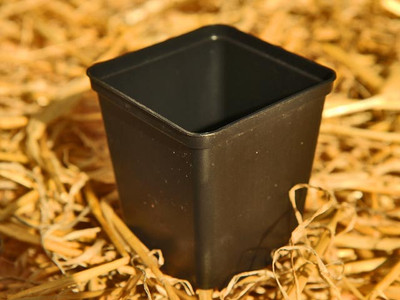Top 10 Vegetables to Grow in Containers
We can't all be blessed with a large outdoor garden space, and so it is that growing vegetables in containers can be an effective way of tackling space limitations.
That doesn't mean you need to severely curtail what you can grow by any means, but there are some things you need to keep in mind about growing in pots or containers vs growing in the outdoors or in polytunnels etc.
The truth is, most vegetables can be successfully grown in pots or other growing containers - provided you use a nutrient rich compost or soil mix. If you are growing vegetables in smaller pots make sure you use compost rather than soil: soil will dry out too quickly and your plants will struggle.
For larger pots you can use a soil mix with approximately 40% good-quality loamy soil and 60% compost. As a rule of thumb, I would recommend compost for plants grown in pots for one season, and soil-based mixes for more permanent planting such as woody herbs or fruit bushes.
We recommend using a good multipurpose compost as a base. To this you can add a slow-release organic fertilizer like our ‘Seafeed’ seaweed and poultry manure pellets. ‘Rockdust’ ground volcanic basalt is also a helpful addition in soil-less compost mixes, as it provides the mineral content usually provided by the soil.
The list below includes some of the easiest vegetables you can grow in pots. There are many more options depending on your preference. Our list should put you on the right path if you're a beginner looking to grow your own food. For more information or advice about growing vegetables in containers, please feel free to contact us.

OK, here we go:
1 - Lettuce
Salad crops are among the easiest and quickest crops to grow. They also need very little room, so are ideal for your first attempt at growing on a windowsill. Romaine lettuce is particularly suited to small pots.
Lettuce seeds are best sown on the surface of your compost and then covered with a very fine layer of compost, as the seeds need light to germinate - sow too deeply and they won’t come up.
Lettuce can be sprinkled over the surface of your pot to grow a mat of baby leaf salad leaves; alternatively sow at the spacings recommended on the packet if you want to harvest a full head of lettuce.
Lettuce needs a good 4 hours or more of full sun exposure to grow. Too much intense sun exposure can be harmful though, so at times shade will be more beneficial. Therefore one of the great benefits of growing lettuce in pots is that you can move them around very easily.
2 - Asian Greens
'Asian Greens' offer a broad range of fast growing salad crops which include rocket, tatsoi, pak choi and mustard leaf. They are generally fast growing and ideal for ‘cut and come again’ growing (this is where three or more harvests can be taken from a single pot).
The flavours and textures on offer are wide-ranging: whether it’s mild leafy greens like mizuna, the crunchy quality of pak choi, or spicy and peppery mustard leaves.
Asian greens can be grown pretty much all year long. When growing in pots, use a seed compost which is finer and has lower nutrients than your standard multipurpose compost.
3 - Radish
Radish are one of the fastest-growing vegetable plants. They can be ready to eat in just over three weeks, whether grown outdoors or in a container. Freshly picked homegrown radishes are delicious, with a satisfying crunch and a slightly spicy flavour.
There are a broad range of varieties, with the most popular being ‘Cherry Belle’ or ‘French Breakfast’ - all are very easy to grow.

Radishes are ideal for growing in pots due to their size and ease, and make a tasty windowsill crop where space is limited. Make sure to choose a sunny spot in which to place them and water frequently.
A pot with good drainage holes will be of benefit, as radish doesn’t tend to thrive in overly moist soil. Sow the seeds 1/4 or 1/2 inch deep and 1 inch apart into the potting medium, and gently cover them back with the mix.
4 - Baby Carrots
Deliciously small and sweet, baby carrots are ideal for growing in pots as they are harvested at an immature stage. Due to their deep root systems, full-size carrots would need to be grown in raised beds or very large and deep pots.
One of the main issues with growing carrots in a vegetable garden is heavy clay or stony soil. Using a fine compost in a pot, however, will make it easy for the carrot to grow down and produce straight roots.
Ideally baby carrots will need a good 6-8 hours of direct sunlight to grow. A delicate balance is required when it comes to watering. Excess water will rid the soil of nutrients, while insufficient - or inconsistent - watering means there is a risk of the carrots splitting. Set a schedule, and water slowly and thoroughly so that the roots can soak up the moisture.
5 - Peas & Beans
Peas and beans work very well in pots. They are a very attractive addition to a container garden, especially when flowering before the pods are produced. Make sure you use a pot large enough to hold the plant support (a wigwam structure made from bamboos is ideal).

Dwarf bush varieties are also available for smaller pots. These don’t climb and so don’t need support. Examples are ‘Kelvedon Wonder’ or the excellent ‘Purple Teepee’ dwarf French bean.
Peas and beans will stay productive longer if harvested vigorously - the more you pick the more you get! Peas will need full sunlight to grow, but partial shade will also be beneficial at the germination stage or if the sun is too intense.
6 - Spring Onions
Spring onions or scallions take up very little space. They can be planted in bunches which are harvested as you need them. As such they are a perfect crop for small container growing.
Grow them in a pot with good drainage holes. It’s best to use a mixture of compost and a loose potting mix for ideal growing conditions. Scatter the seed over the surface and then cover with roughly a half inch of compost.
Spring onions also look fantastic as part of a display of potted vegetables, with their long slender stems graduating from white at the bottom through to dark green at the leaf tips. Sow a small pot every 2 or 3 weeks to have a continuous supply throughout the summer. Don’t be misled by the name: spring onions can be planted in summer and autumn too.
7 - Tomatoes
Depending on the climate where you live, tomatoes are either grown outside in a sunny sheltered spot or inside in a greenhouse, polytunnel or bright conservatory.
Tomatoes are easy to grow and well suited to pots - providing they are fed well. Bear in mind that a single tomato plant can produce hundreds of fruit, so its nutrient demands are going to be high. Mix a poultry manure and seaweed pellet in with the compost. When required, feed plants with a liquid tomato feed high in potassium.

It’s recommended to fertilise the plants once every two weeks in the early growing phases. It’s also important to keep a consistent level of moisture, so water regularly. Make sure the pots are big and deep enough: 1-2 square feet is recommended per tomato plant.
Climbing and bush varieties are available depending on your preference. Climbing varieties (such as Gardeners Delight or Sungold) tend to be more productive, and can be supported with a single pole fixed in the centre of a large pot.
8 - Beetroot & Swiss chard
Beetroot and swiss chard are from the same plant family, with one being grown for the roots and the other for the leaves. Both are easy to grow in containers with a good quality compost.
Beetroot seeds are actually clusters of 4 or 5 individual seeds. A single seed can be planted in a 5 litre pot and will produce a number of plants, depending on how many germinate.
Smaller baby beets are recommended for growing in pots. The larger beets can be restricted in growth by the size of the pot; this can cause them to become woody and unpleasant.
Chard is also known as perpetual spinach and is highly nutritious. It’s a very productive crop, as it will produce new leaves when cut. One or two plants will provide nutritious leaves for a full season. Leave plenty of room: ideally one plant per 5 litre pot.
9 - Kale
Kale is a highly nutritious vegetable and it’s regarded as something of a ‘superfood’ due to its antioxidant content. It has the added advantage of being a virtually bullet-proof plant, able to survive all but the worst winter temperatures.
There are a number of varieties suitable for growing in pots, with Russian Kale and Nero Di Toscana Italian kale both highly recommended. The seeds can be sown from early spring up until late summer.

Kale will appreciate a well fed compost with poultry manure added. The final size of the plant will be relative to the size of the pot and the nutrients available. Pots should be at least 12 inches deep to allow enough room for the roots. Having said that, curly varieties can grow well in smaller containers. Water the kale regularly, and check to make sure the pot doesn’t dry out during warmer weather spells.
Kale is suitable for cut-and-come-again harvesting, so you can take the outer leaves as and when you need them - leaving the plant itself to keep producing. It will benefit from direct sunlight but it also does well in partial shade conditions.
10 - Potatoes
I am including potatoes here as they are easy to grow in a potato bag planter, which is essentially a very large pot. Potatoes are ideal as container-grown vegetables - providing you keep them well watered. Lack of irrigation is the most common reason for small yields.
Early potato varieties tend to be more suitable for growing in pots. This is because they mature quicker and are usually harvested before the most common potato disease - blight - becomes an issue in late Summer.

















